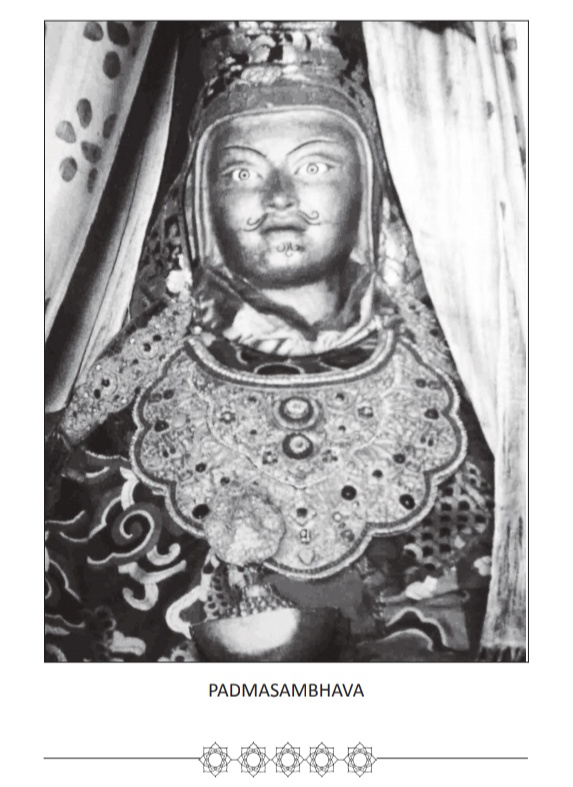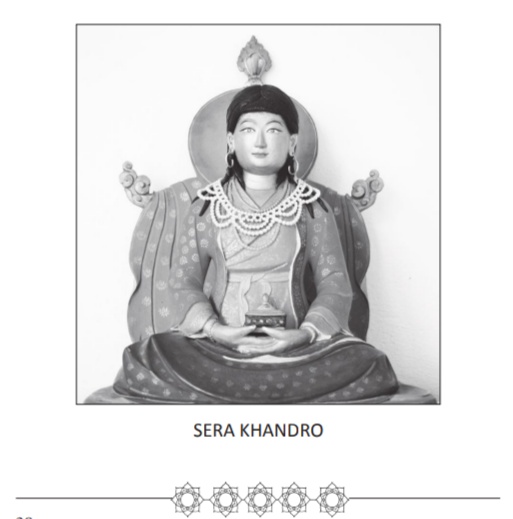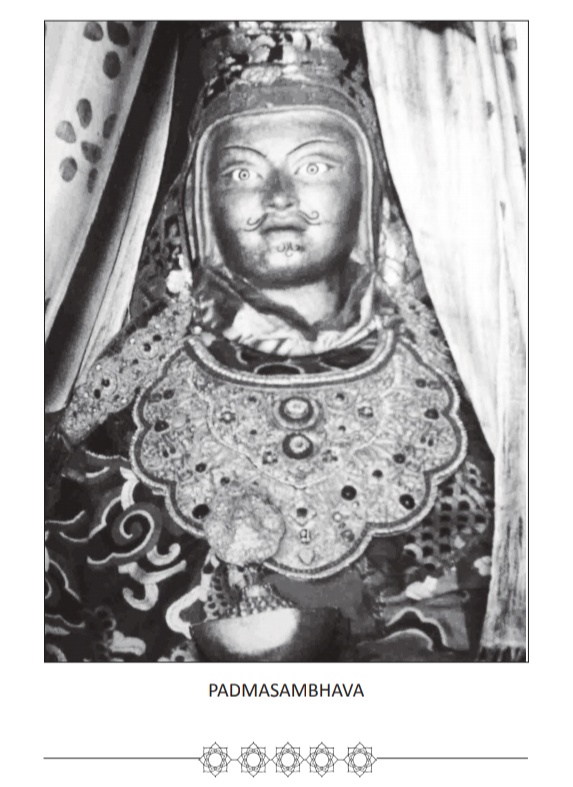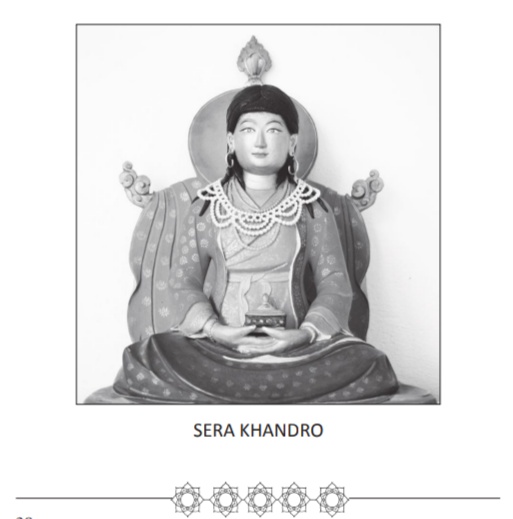

CHAPTER Three
How wonderful!
Then you meditated in India’s eight sacred charnel grounds,
Where you saw the deities and received their prophecies.
Having reached perfection, you demonstrated various signs of
accomplishment.
You eradicated demons and defeated challenges from non-Buddhists.
You traveled to Zahor, where you induced Princess Mandarava
to enter the gate of your teachings.
The king’s punishment was to execute you in fire.
That pyre turned into a lake; you demonstrated many miracles.
You had attained a vajra body; nothing at all could harm you.
The king, in amazement, was moved to faith and respect,
And acknowledged regretfully his wrongdoing.
You then converted the whole kingdom of Zahor to Buddhism.
At Maratika Cave you meditated to gain immortality.
You perfected the practice of longevity and met Buddha Lord of
Infinite Life.
Birth and death lost their hold on you; your body matured into
immutability.
You journeyed to the five families of enlightenment’s pure lands,
such as Dense Design,
And there you consulted with the Joyful Buddhas:
“Apart from this mind, there is no Buddha,” they said.
You meditated upon Great Seal in Parping
And attained accomplishment of Great Seal.
While you meditated in Yari-gong,
A debate with non-Buddhists was held in Vajra Seat [Bodhgaya].
The dakinis advised the five hundred great scholars there
To invite you and your entourage to Vajra Seat.
With miraculous power you subdued all the non-Buddhists,
Established the true doctrine in India,
And preserved the Way of Secret Mantra at Vajra Seat.
This completes Chapter Three from The Immaculate White Lotus: The Life
of the Master from Oddiyana: Preserving the Doctrine in India and Con-
verting the Land to Buddhism.
Om Ah Houng Benza Guru Péma Siddhi Houng


